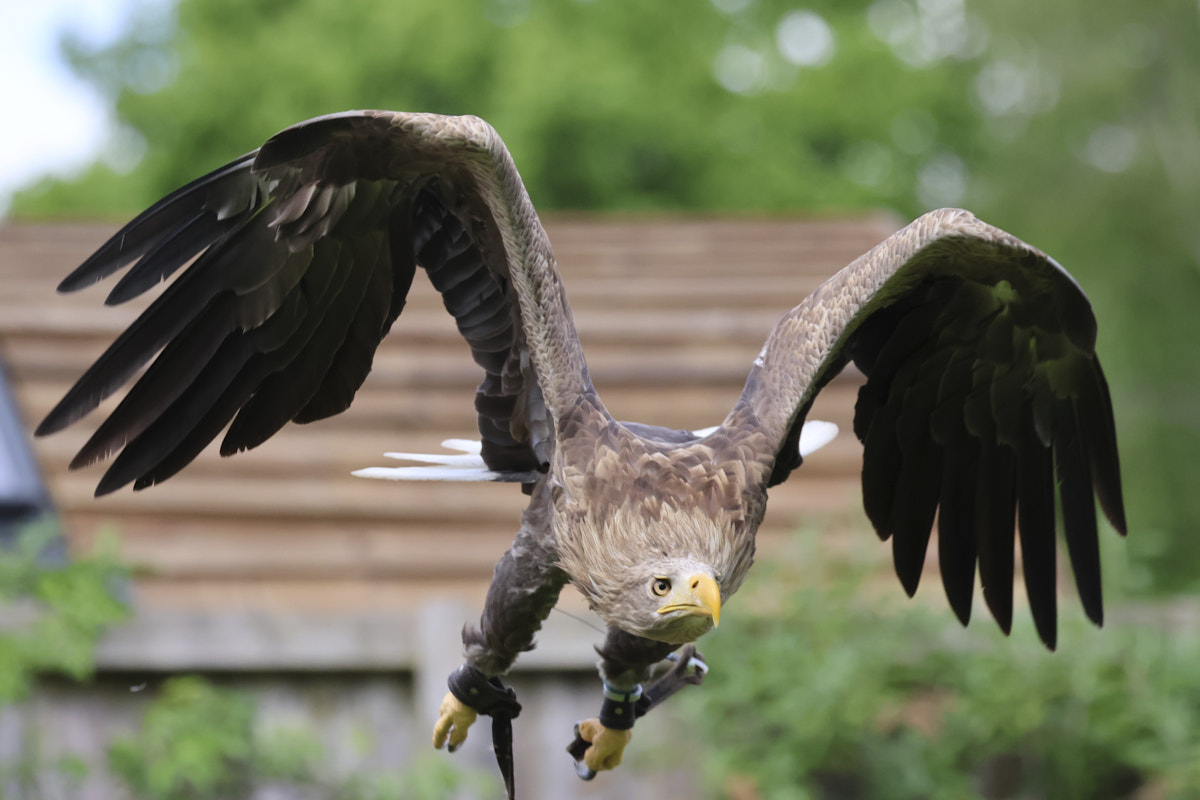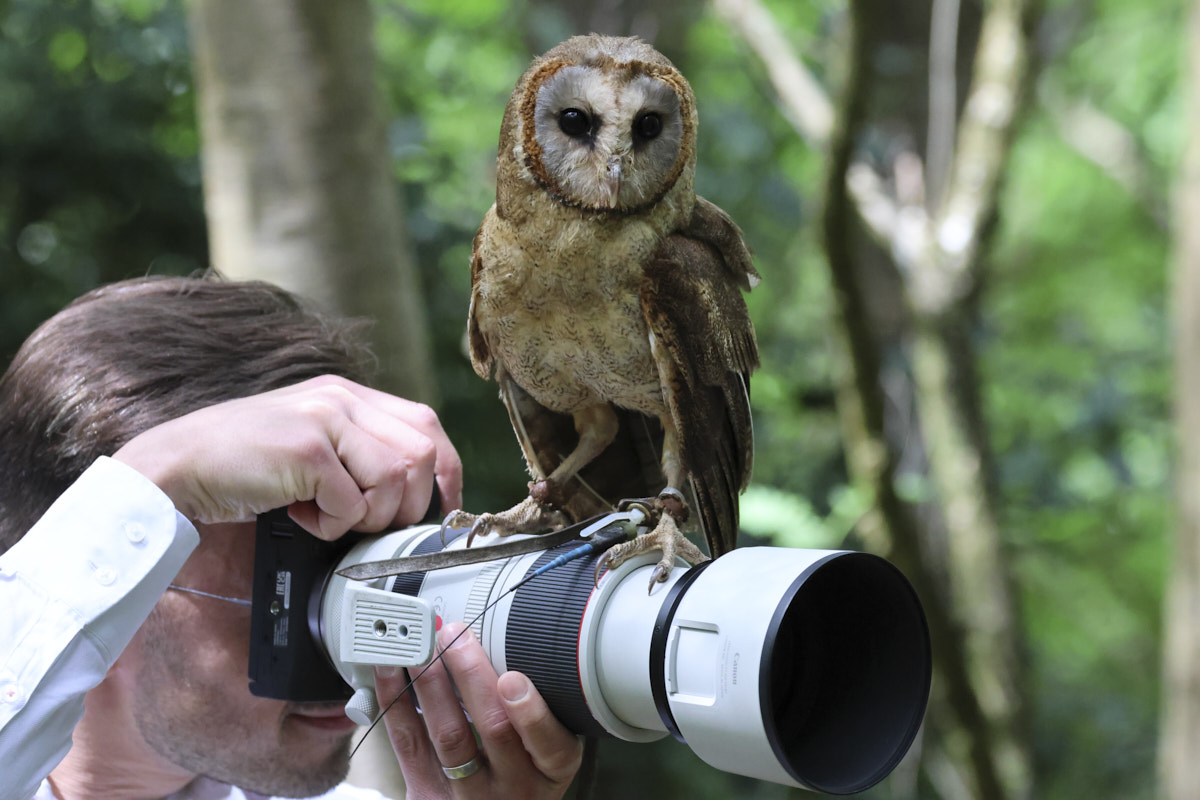Best Lenses For Wildlife Photography: Read our guide.
Wildlife Photography Lens Guide: What are the best Lenses for Wildlife Photography?
Capturing stunning images of wildlife requires careful consideration of various factors, and one critical aspect is choosing the right focal length for your lens.
Why lenses are important for Wildlife Photography?

Focal length plays a crucial role in determining the perspective, composition, and overall impact of your wildlife photographs. In this blog post, we will explore the best focal lengths for wildlife photography to help you make informed decisions when planning your next wildlife photography adventure. At Harrison Cameras we have a wide range of lenses for wildlife photography so let's take a look at the options.
What are the best Lenses for wildlife photography?
Short Telephoto Lens (70-200mm): Ideal for Portraits and Close-ups

A short telephoto lens, such as a 70-200mm, is a versatile option for wildlife photography. It offers a moderate zoom range, allowing you to capture portraits of animals, close-ups of their faces, and details like fur or feathers. With a 70-200mm lens, you can photograph animals from a safe distance without disturbing them, which is crucial for capturing their natural behavior without causing harm or stress. This focal length is also great for isolating the subject from the background, creating a pleasing separation and bokeh effect.
Most camera brands will do various 70-200mm options. With popular options for Canon, Nikon and Sony.
Medium Telephoto Lens (200-400mm): Perfect for Wildlife Action
A medium telephoto lens, such as a 200-400mm, is an excellent choice for capturing wildlife action, such as animals in motion, flying birds, or fast-moving subjects. The longer focal length allows you to zoom in closer and fill the frame with your subject, capturing the details and behavior of animals in action. This focal length is also useful when photographing animals in challenging lighting conditions, as it helps to compress the background and create a smooth and pleasing bokeh effect.

Most camera brands will do dedicated lenses in this range with the Canon 100-500mm F4.5-7.1L IS and Nikon 100-400mm F4.5-5.6 being good options. For Sony users you have the excellent Sony 100-400mm G master lens. If using Fujifilm cameras for wildlife photography there is the new Fujifilm 150-600mm lens which offers good performance.
Super Telephoto Lens (500mm and above): Ideal for Distant Wildlife
A super telephoto lens, such as a 500mm or longer, is a powerful tool for capturing distant wildlife. It allows you to photograph animals that are far away, such as shy or elusive species, without disturbing their natural behavior. A super telephoto lens also gives you the flexibility to shoot in challenging conditions, such as low light or adverse weather, while maintaining image quality and sharpness. However, it's important to note that super telephoto lenses can be heavy and require a sturdy tripod or other support to avoid camera shake.
These lenses tend to be quite expensive, but for professional wildlife photographers they offer the best image quality with the likes of Canon’s RF 600mm F4 and Nikon Z 800mm F6.3.
Wide-angle Lens (24-70mm): for Environmental Portraits
While wide-angle lenses are not typically the first choice for wildlife photography, they can be useful for capturing environmental portraits of animals in their habitat. A wide-angle lens, such as a 24-70mm, can help you tell a story by including the animal's surroundings and providing context. For example, you can capture a herd of elephants grazing on the savanna, or a bear fishing in a river, with a wide-angle lens. It's essential to be cautious when using wide-angle lenses, as getting too close to wildlife can disturb them and pose a risk to your safety.

In conclusion, the best focal lengths for wildlife photography depend on your shooting style, the type of wildlife you want to photograph, and the story you want to tell. Short telephoto lenses (70-200mm) are ideal for portraits and close-ups, medium telephoto lenses (200-400mm) are perfect for wildlife action, super telephoto lenses (500mm and above) are ideal for distant wildlife, and wide-angle lenses (24-70mm) can be used for environmental portraits. This guide gives an idea as to the traditional focal lengths used for wildlife photography, but there are plenty of options out there for all budgets and camera systems. Check out our range of lenses to choose the right one. It is also worth thinking about weather conditions when choosing a lens. Professional lenses tend to be of higher construction and often feature weather sealing.
When photographing wildlife, it's crucial to prioritize the welfare of the animals and respect their natural behavior. Always follow local regulations and ethical guidelines for wildlife photography to ensure the safety and well-being of the animals and yourself. With the right focal length and mindful approach, you can capture breathtaking wildlife images that tell compelling stories and inspire others to appreciate and protect our natural world.








